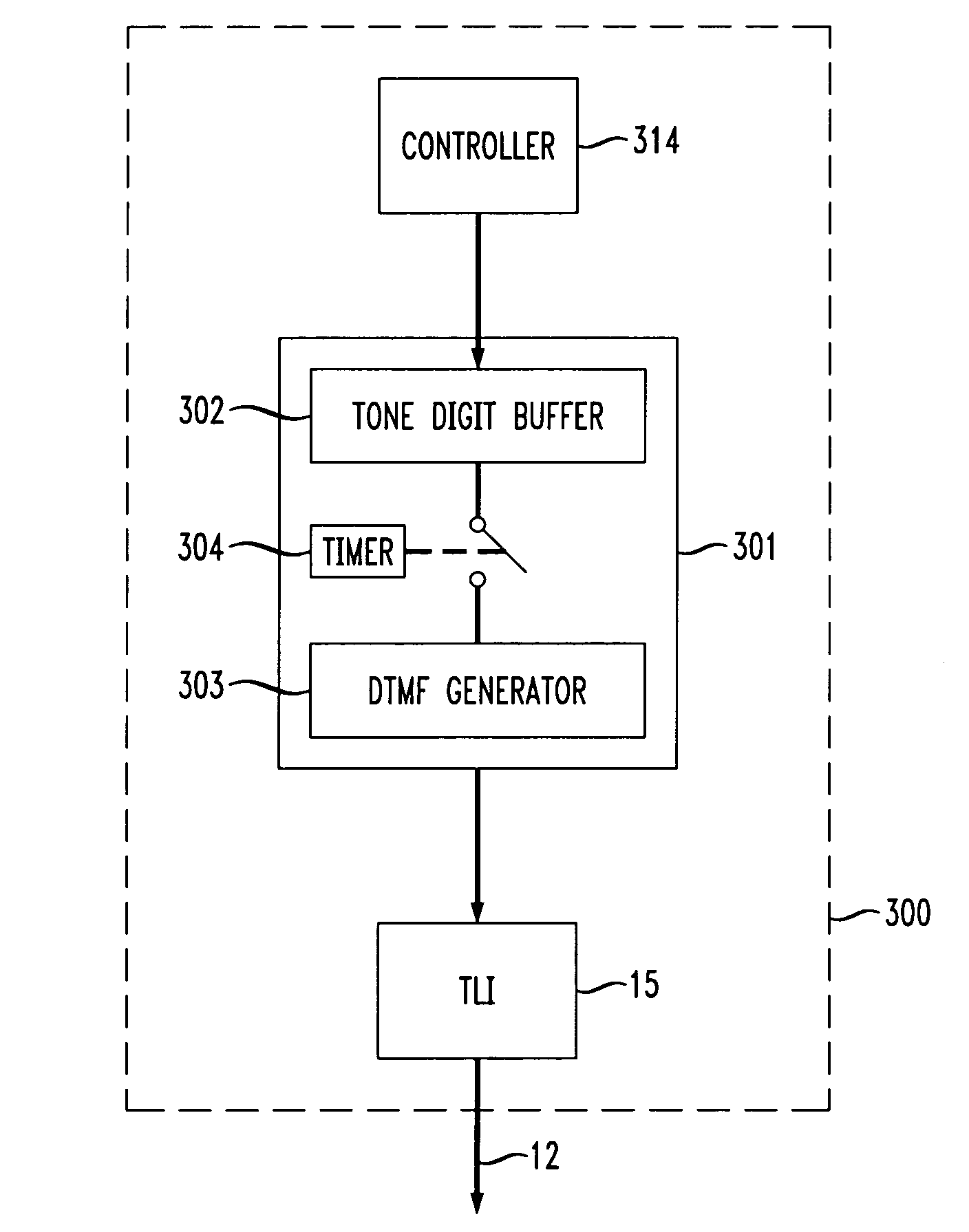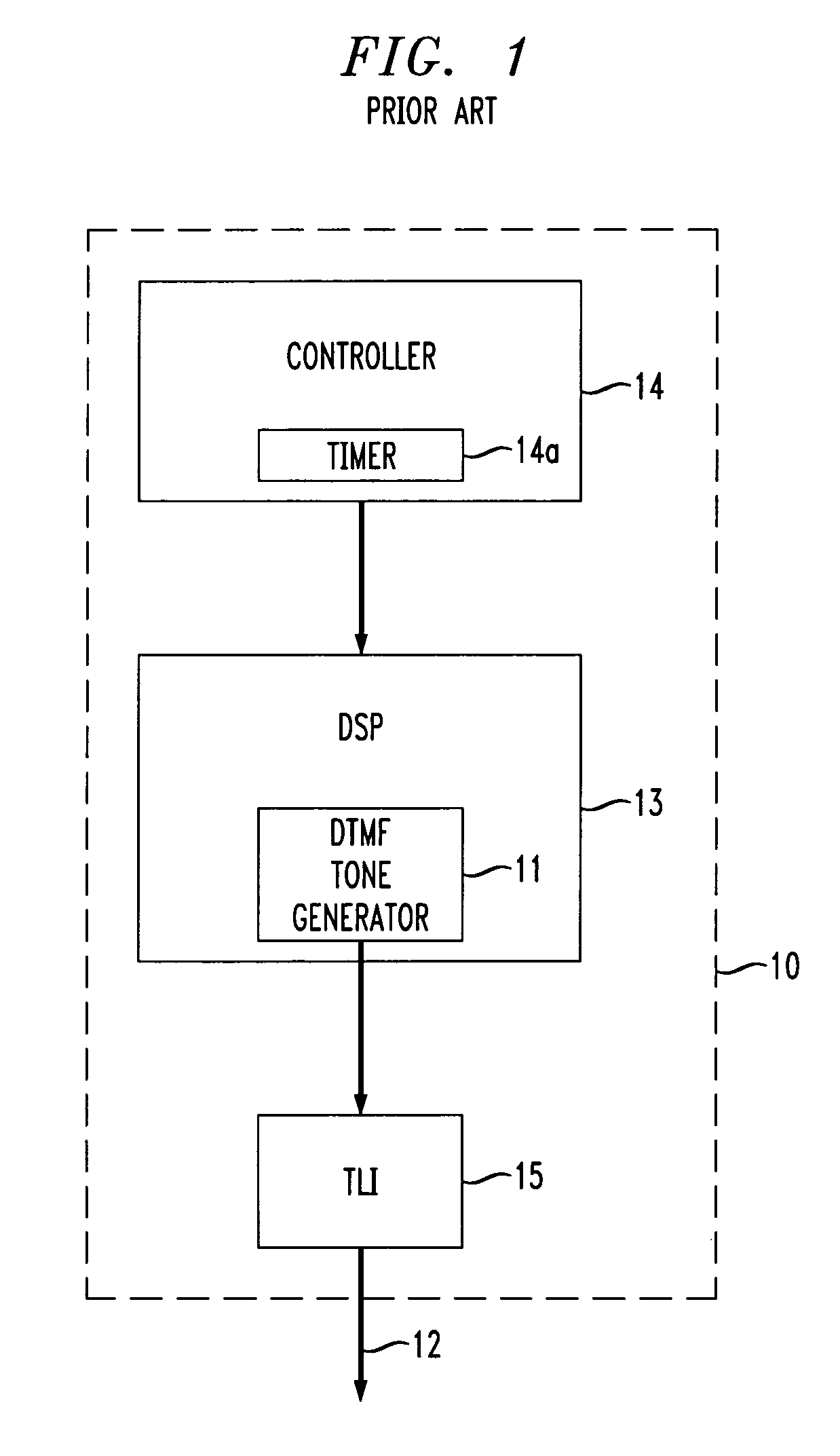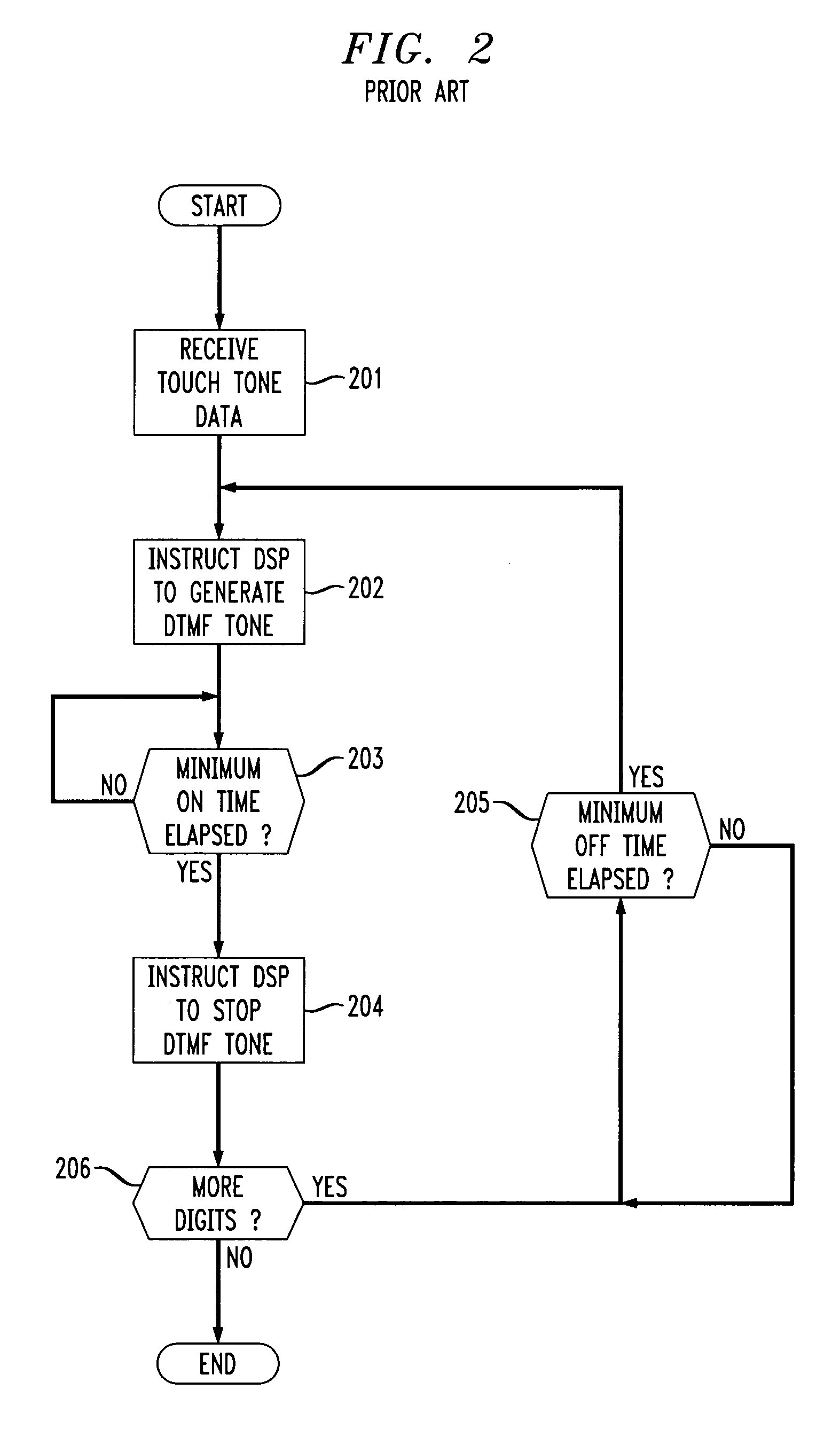True DTMF dialer
a dialer and dialing technology, applied in the field of true dtmf dialing, can solve the problems of high software development and handling costs, the potential of quickly turning into an implementation nightmare for software engineers, and the complexity of conventional digital telephone systems
- Summary
- Abstract
- Description
- Claims
- Application Information
AI Technical Summary
Benefits of technology
Problems solved by technology
Method used
Image
Examples
Embodiment Construction
[0036]The present invention implements a circular dial buffer in appropriate random access memory (RAM) accessible by the DSP (e.g., 16 or 32 bytes minimum) for the purpose of storing and dialing out DTMF digits. Although the DSP can use default digit / pause timings consistent with speed dial techniques, the processor (e.g., microcontroller) is able to customize such parameters to suit the needs of the particular application.
[0037]To the processor, the DSP appears to behave much like an off-the-shelf stand alone touch tone dialer, with the exception that the DSP does not have access to a keypad input. Instead, the manual timing associated with keypad input is simulated by the processor in commands to the DSP. Thus, instead of inputting rows and columns or other information relating to button activation on a keypad to input touch tone digits, the principles of the present invention utilize DSP commands sent from the processor to the DSP to mimic manual activation of keys being pressed...
PUM
 Login to View More
Login to View More Abstract
Description
Claims
Application Information
 Login to View More
Login to View More - R&D
- Intellectual Property
- Life Sciences
- Materials
- Tech Scout
- Unparalleled Data Quality
- Higher Quality Content
- 60% Fewer Hallucinations
Browse by: Latest US Patents, China's latest patents, Technical Efficacy Thesaurus, Application Domain, Technology Topic, Popular Technical Reports.
© 2025 PatSnap. All rights reserved.Legal|Privacy policy|Modern Slavery Act Transparency Statement|Sitemap|About US| Contact US: help@patsnap.com



